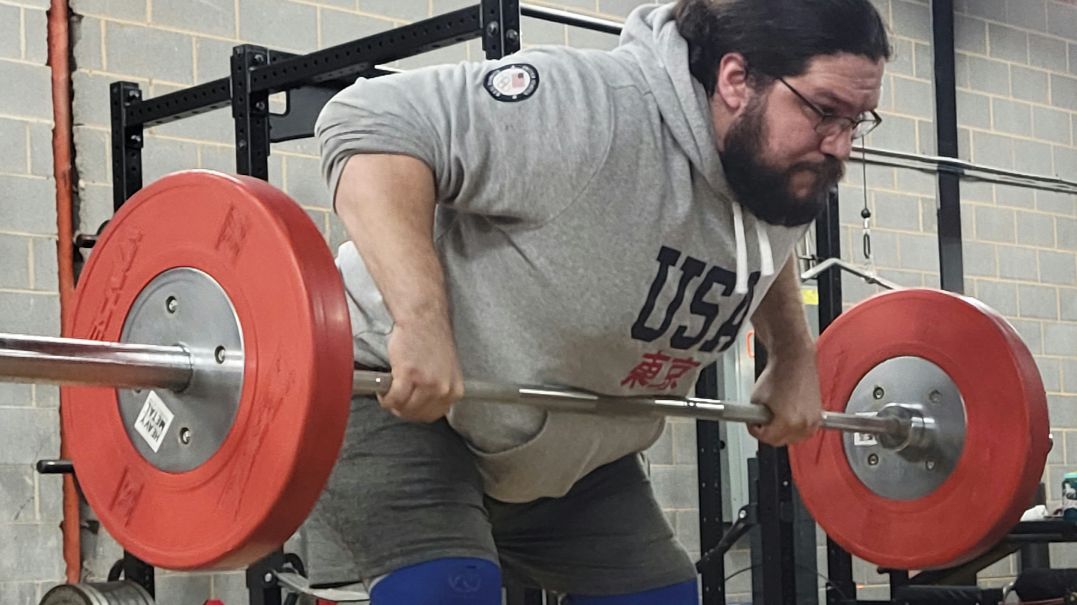We test and review fitness products based on an independent, multi-point methodology. If you use our links to purchase something, we may earn a commission. Read our disclosures.
Being a weightlifter, I’ve always strived for a strong back and shoulders. In a clean and jerk, all the way from the pull off of the floor to standing with a big personal record overhead, I would need a strong back to maintain positions and solid shoulders to support the weight throughout the lift.
Even if you’re not a competitive weightlifter, your back and shoulders are important, both for quality of life and also for any general strength training. In the gym, we are all striving for a toned, shredded back and some boulder shoulders. But it takes time and a bit of know-how to get the most out of your gym visit.
Here, I’ll cover the reasons why you can train your back and shoulders together, as well as some great shoulder and back exercises. Afterwards, I’ll provide a quick back and shoulder workout for you to try out on your own!
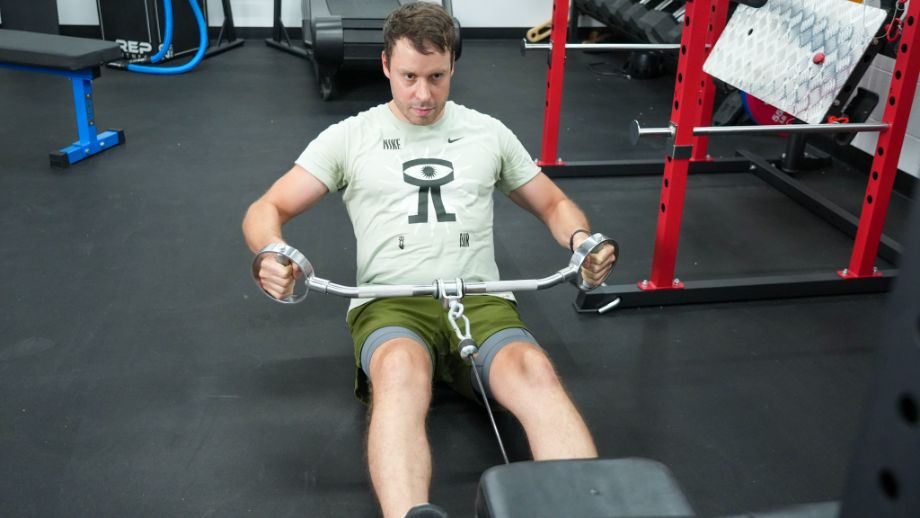
Why Work Back and Shoulder Muscles Together?
Pairing two different muscle groups together benefits your workout by not overwhelming or overtraining one group of muscles. Splitting your focus on separate muscle groups allows for you to put good solid work in your workout without overdoing it in one area.
Additionally, you can add some variation to your workout. For example, you can build strength with lower reps and heavier weight with your back or shoulders, and then focus on hypertrophy and build muscle with higher reps on the other muscles.
A back and shoulder workout has a special benefit as well. Traditional bodybuilding will typically pair your back with biceps; however, the back and shoulders can be a great pairing due to them having a little bit of overlap in the muscles used. Many upper back exercises have some shoulder muscles used to a smaller degree, and vice versa. So doing back exercises at the start will often act as a primer for the shoulders after.
In the same way, doing shoulders first will get the back ready for when you tackle that muscle group. Even though there is some overlap, these muscle groups are different enough to allow you to feel rested hopping back and forth between the two muscle groups.
7 of the Best Shoulder Exercises
Let’s get some boulder shoulders. You can perform these workouts with dumbbells, kettlebells, or barbells.
Overhead Press
No shoulder workout would be complete without the classic shoulder press, or one of its many variations. It’s one of the best exercises for shoulders and a staple in most any program. Typically done with a barbell, you can also vary the press to a one-armed dumbbell shoulder press, to work a bit more on stabilizing throughout the movement.
To perform an overhead press:
- Stand with the feet shoulder-width apart and grip a barbell at shoulder height, with the elbows rotated underneath the barbell.
- Press up with the shoulder, extending the arms all the way overhead, locking out at the top before lowering the bar back down.
Done correctly, this will hit the deltoid muscles as well as the triceps.
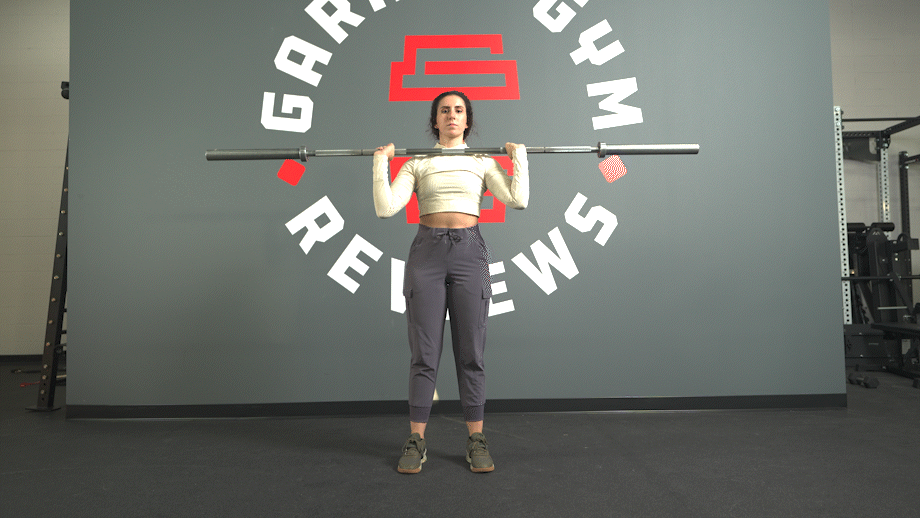
Dumbbell Lateral Raises
Lateral raises isolate the shoulders, unlike the shoulder press, focusing almost entirely on the side delts throughout the motion. It is very easy to start cheating on form by swinging the weight if it’s too heavy, so I would recommend keeping the dumbbell weight light enough to maintain good form.
To perform dumbbell lateral raises:
- With a dumbbell in each hand, stand with your arms slightly bent at your side.
- Raise the arms outwards until the arms are at shoulder height, and horizontal.
- Bring the arms back to your side.
The entire range of motion, up and down, should be controlled and deliberate to get the best effect. Focus on just using the shoulders to raise the arms up; sloppy or fast technique on this will start to engage the traps and other muscle groups, which we do not want on an isolating exercise.
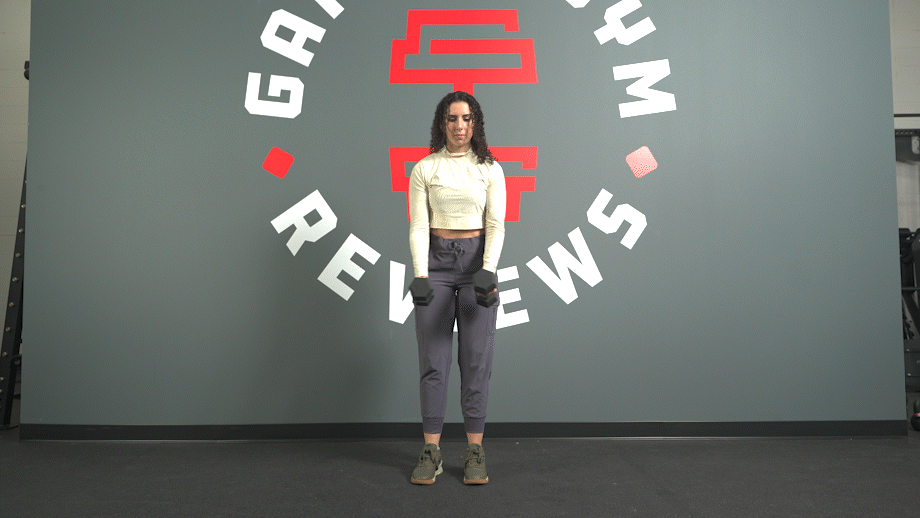
Dumbbell Front Raises
To perform a lateral raise:
Front raises are a great way to focus on the anterior delts; some chest and other shoulder exercises will get you that attention, but front raises will isolate the front of the delts like no other exercise. These are similar to lateral raise, but just change the direction we are raising the arms.
To do a front raise:
- Stand with the arms almost straight at your side.
- Controlling the dumbbells, lift the arms straight out in front of you, keeping the heads of the dumbbells to the side.
- Bring it to shoulder height and then back down.
Just like the lateral raises, keep the weight light and focus on good movement and control to keep the movement isolated.
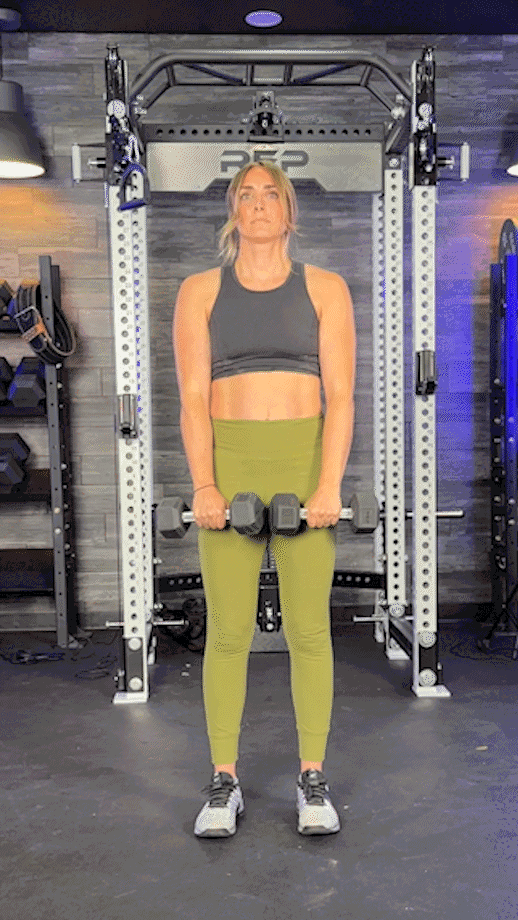
Incline YTWL Raises
YTWL raises are not only a great exercise to build the shoulders, but are also great to keep the shoulders moving well and fluidly. They involve shoulder rotation, and that can help train the rotator cuff. I’ve used YTWL raises a lot in my weightlifting career to keep my shoulders healthy and stable as I routinely hold heavy weights overhead. This is also one of those exercises that crosses over between back and shoulders; not only does it work the shoulders and posterior deltoid, but it also gets the upper back, particularly the rhomboids.
The Y, T, and WL simply refer to the shape you are making with your arms and body in these movements.
- For each raise, your starting position will be lying on your stomach on an incline bench. Taking a set of light dumbbells, have one in each hand resting at the side.
- To begin, retract your scapulae, which should feel like you are pinching your shoulder blades together.
- Pinch back, not up, so we do not get the traps involved. Maintain this tight retraction throughout the movement.
- For the Y raise, keep the arms straight, and begin to lift the arms up and out at about a 45-degree angle, forming a “Y” with the arms, and then bring the arms back to the sides of the bench.
- For a T raise, the arms will go straight out to the side until they are horizontal, forming a “T.”
- The WL raise gets a little more involved. Keeping the shoulders back, pull the arms up until the elbows are bent at about 90 degrees, forming a “W,” then rotate the forearms 90 degrees to horizontal, maintaining the bend in the arm, and keeping the rotation in the shoulders. Then rotate back down, extend the arms to the sides of the bench, and relax.
Again, because this deals with shoulder rotation, I’d recommend starting with and using a light weight on these. If this is your first time, you could even go through the motions just with your own bodyweight as resistance.
Arnold Press
Named after the famed bodybuilder-turned-action-hero, the Arnold press is a variation of the overhead press where the front delts are the focus, while also getting the upper arms and back involved. It’s one of my favorite vanity bodybuilding exercises, but it is a great tool for building stronger delts and a strong upper body.
To do an Arnold press:
- Your starting position will be standing with a pair of dumbbells, one in each hand, with the weights curled up to the shoulders, palms facing the chest.
- Press with the shoulders up while rotating the shoulders back; the dumbbells should rotate through the motion as well, finishing with the arms locked out overhead and the palms now facing forward.
- Bring back to your starting position, rotating forward again.
Starting with the dumbbells forward gives the front delts and biceps a good workout, while the rotation of the shoulders gets the upper back involved, retracting the shoulder blades. If you haven’t before, I’d recommend giving this one a try!
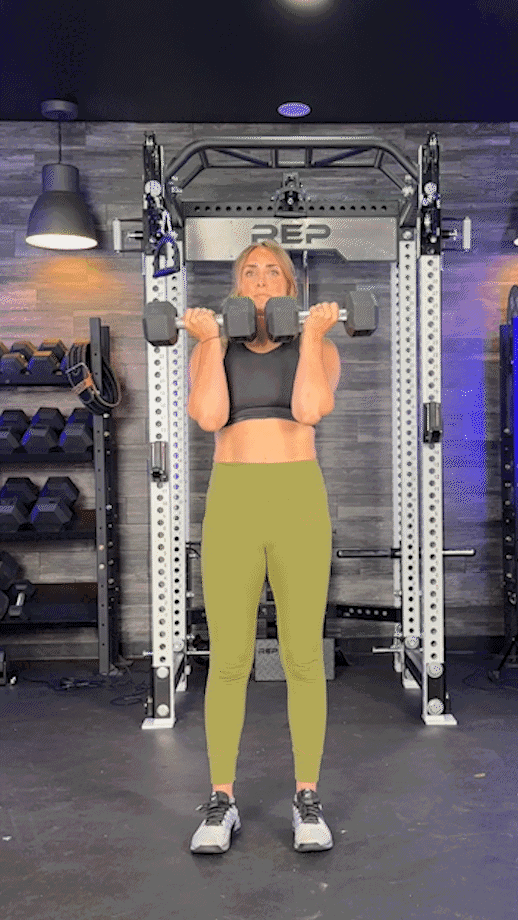
Upright Row
An upright row will target the shoulders and upper back, specifically the side delts and trapezius muscles. Typically done with a narrow grip, you can do this exercise with a barbell or a kettlebell. An upright row targets the delts, but also will get the traps and rhomboids involved at the top of the row; it’s even good to get a bit of the biceps involved.
To perform an upright row:
- Begin standing with your feet shoulder-width apart, gripping your weight with a narrow grip in front of you (no wider than your shoulders).
- While keeping the core tight, pull the barbell up to about neck height, leading with the elbows and keeping the bar close to the body.
- Once at this height, lower the bar back to the starting position.
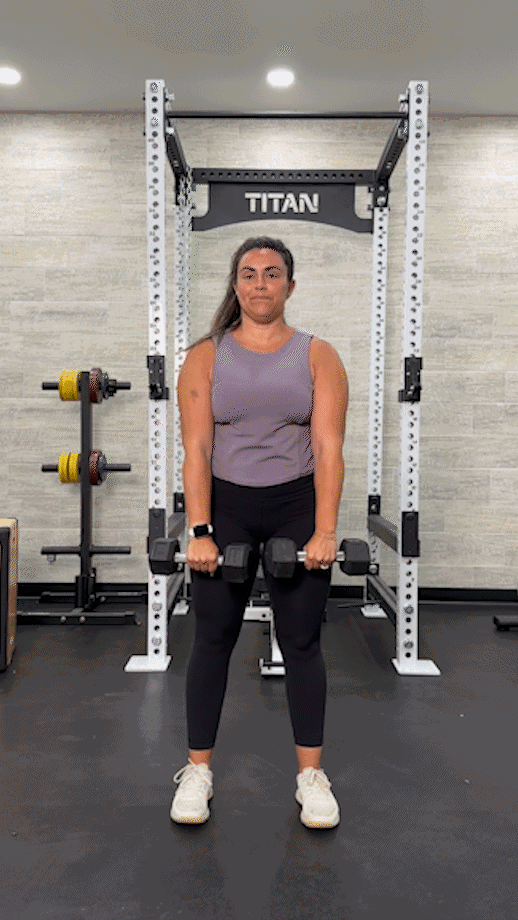
Dumbbell Reverse Fly
Bent flyes are similar to the YTWL raises, in that they not only work on the shoulders, but also the upper back. It’s a great addition to any upper body workout. These will not only get the rear delt, but also the rhomboids and upper back too.
To do a dumbbell reverse fly:
- Start bent over at the hips, with the hips shifted back, keeping the lower back and core braced and tight.
- Have each arm slightly bent and extended down, with a dumbbell in each hand.
- From there, maintain the slight bend in the arms, as you rotate the arms outward to the side, pinching the shoulder blades back as you move.
- Lift the arms to about parallel, and then lower the set of dumbbells down to the starting position.
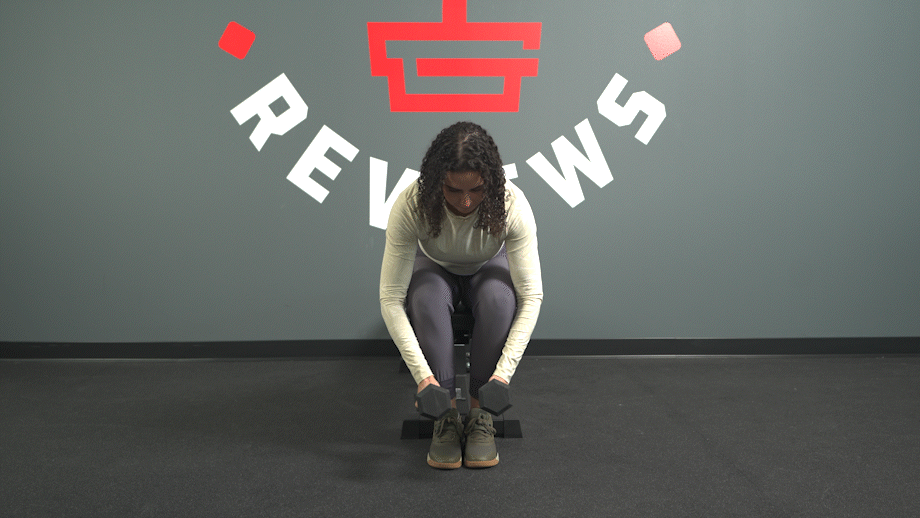
7 Exercises to Target Back Muscles
There are a number of exercises to develop your back muscles; here are my favorites:
Barbell Bent-Over Rows
A bent-over row is a staple in building a strong upper back, working on the spinal erectors and the shoulder blades. The lifts that I compete in begin off the ground, and not only do I need strong legs to push off the floor, but a strong back to maintain solid positions off the floor. So bent rows and its variations have been an integral part of my workout routine. For variety, you can use dumbbells for a dumbbell row instead.
To do a barbell bent-over row:
- Begin with a barbell gripped at the hips while standing, and shift the hips back, until you are bent over.
- Knees should be slightly bent, and the arms relaxed downward in front of you.
- Keeping the core engaged, pull the barbell up to the chest, keeping the shoulders retracted through the movement.
- Hold at the top, and then bring the arms back to extension.
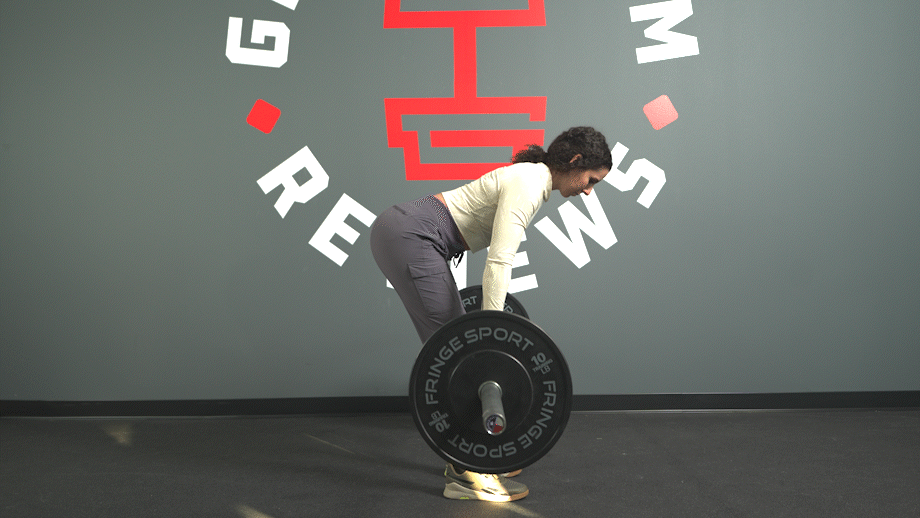
Lat Pulldowns
Lat pulldowns are done with a cable machine and target the big back muscles: the latissimus dorsi. Although I typically do not use machines in my training, this is definitely one exception to the rule. Pulldowns help work and build the lats, and are a great way to supplement any training routine.
To do a lat pulldown:
- To begin, you’ll sit down in front of the pulldown machine, weights already loaded onto the machine. The knees will go underneath a bracing bar, just to keep you in place through the motion.
- Grab the bar over your head with a wide grip, and with a slight lean back, pull the bar towards the chest, focusing on pinching back and down with the back; this will engage the lats and erectors throughout the movement.
- Bring the back as low as you can while engaging the back, and then extend the arms back to the starting position.
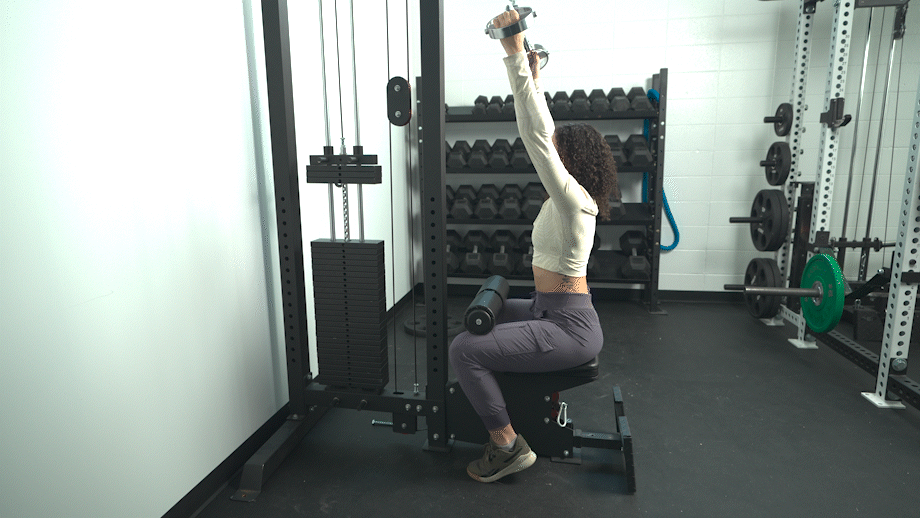
Pull-ups
Pull-ups are another great tool for building the lats. Whereas the lat pull-downs focused on isolating the back muscles, a pull-up is more functional and will get multiple areas of the upper body working together. Along with the back, the arms, primarily biceps, and shoulders will get a good workout as well.
To do a pull-up:
- Find a pull-up bar at a height where you are off the floor at a dead hang.
- From that dead hang, engage a tight back and pull yourself up to the bar, getting the chin over the bar. Focus on keeping the back retracted and engaged throughout the movement.
- Once at the height of the pull-ups, lower yourself back down to the starting hang.
If pull-ups are a little too difficult, try to scale them by using a resistance band to alleviate some of the bodyweight resistance.
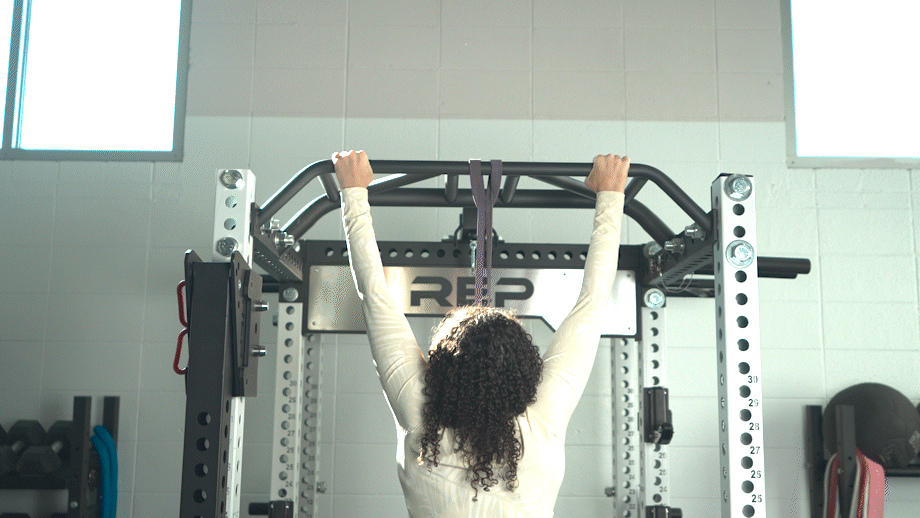
Romanian Deadlifts
You can’t forget about the lower back! Romanian deadlifts (RDLs) are a variation of a traditional deadlift that focuses mostly on the posterior chain: the low back, erectors, glutes, and hamstrings. I use it all the time in my weightlifting program. Although this is a variation of a deadlift, I would recommend keeping an overhand grip for both hands, as the weight should stay light enough to where grip won’t be (as much of) an issue like heavy deadlifts.
RELATED: Deadlift Muscles Worked
To do an RDL:
- Unlike deadlifts, an RDL will start at standing, with the feet hip-width and the barbell in your hands at the hips.
- Keeping the arms relaxed, but the upper back retracted, let the knees bend slightly as you hinge at the hips, shifting the hips back to maintain your center of gravity.
- Keeping the back tight, continue bending at the hip as far as you comfortably can, or until the weights are about to touch the floor.
- Then, fire the glutes to raise the upper body back up to the starting position.
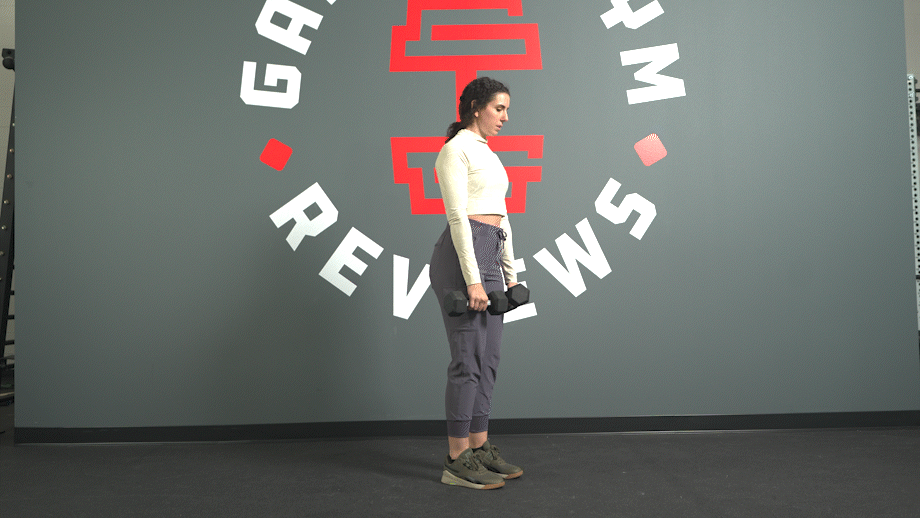
Back Extension
Back extensions also focus on the lower back and posterior chain. To perform a back extension, you’ll need a back extension or GHD machine. Adjust the machine’s pad to just below your hip bone to be able to get the full range of motion, and secure your feet. If you haven’t done a back extension before, a personal trainer can show you how to make adjustments to the machine. You can use a weight plate held at the chest for an added challenge.
To do a back extension:
- Once on the machine, begin with the hips bent, back lowered towards the ground.
- Keeping the back engaged, bend at the hips to bring the back up until the back and hips are in line, shoulder engaged at the top. It’s important to keep the head and neck neutral; the main focus is extension of the low back.
- Engaging the neck or head excessively can lead to overextension.
- Bend back over at the hips to the starting position.
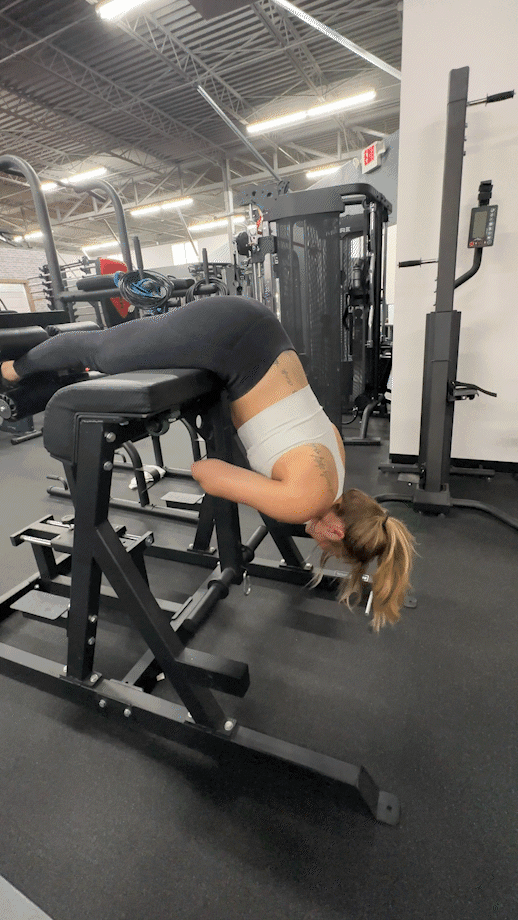
Supermans
Supermans are a light but effective way to work on the lower and upper back erectors.
To perform a superman:
- Laying on your stomach, begin in a relaxed position with the legs straight out and arms overhead.
- From here, engage the lower back as you lift the arms and legs of the ground.
- Flex the glutes to make sure the quads come off the ground, and retract the shoulder blades to lift the shoulders off the ground.
- Hold for 3 seconds, and then lower back to the ground.
For an added challenge, use light dumbbells, or even a medicine ball held with both hands.
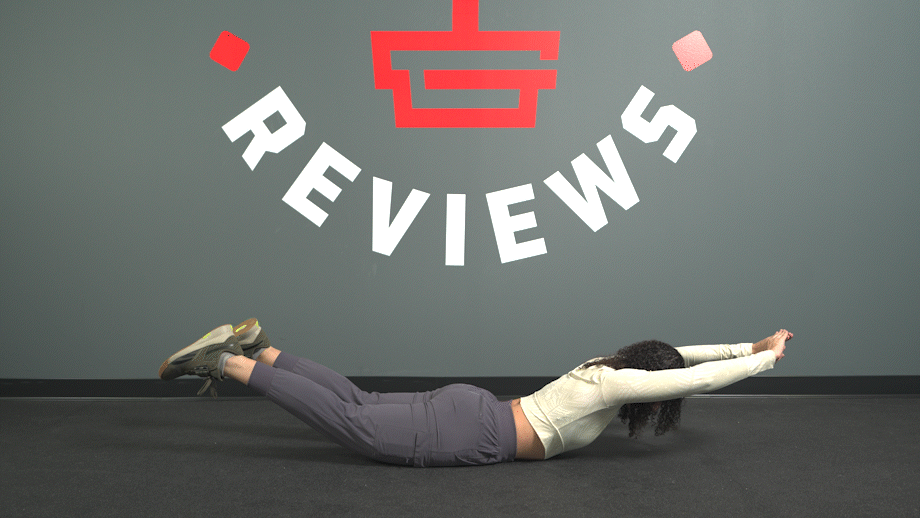
Shrugs
Barbell or dumbbell shrugs are one of the best ways to work on and isolate the trapezius in your back routine. It’s a simple movement that can be a great finisher to your back workout.
To perform a shrug:
- Begin with the weight in your hands in front of you, arms extended at your side.
- Standing tall, keep a braced core and lift the shoulders towards your ears. This will engage the traps through the movement.
- After shrugging, relax the shoulders back to the starting position. Keep this movement controlled to isolate the traps throughout the exercise.
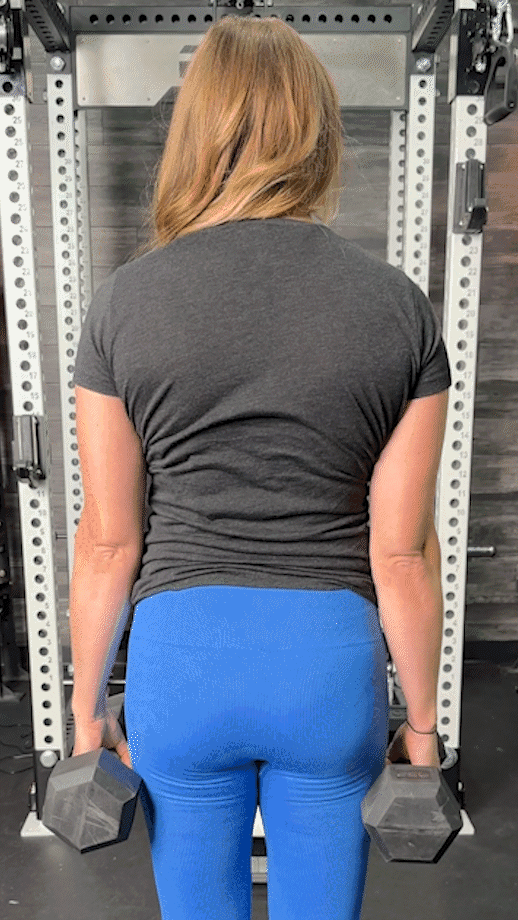
Try This: Back and Shoulder Circuit
Ready to exercise: Try this circuit:
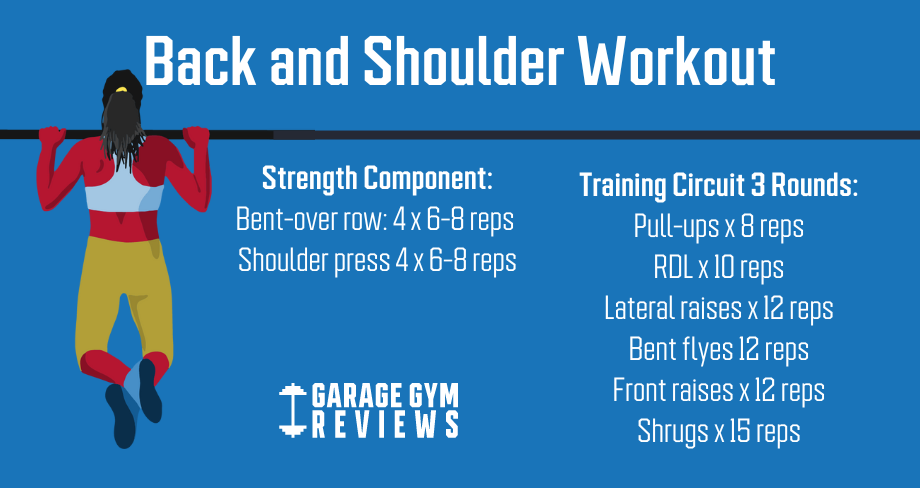
Strength Component:
- Bent-over row: 4 sets x 6-8 reps
- Shoulder press 4 sets x 6-8 reps
Training Circuit:
3 Rounds:
- Pull-ups (or Lat Pull-downs) x 8 reps
- RDL x 10 reps
- Lateral raises x 12 reps
- Bent flyes 12 reps
- Front raises x 12 reps
- Shrugs x 15 reps
Rest 30 seconds between exercises, 1-2 minutes between rounds
Superset the strength component of this workout, alternating between the two muscle groups. Take a couple of minutes between sets. Find a good weight to be able to perform six to eight reps of each exercise for each set.
After the strength portion, get some higher reps through the circuit listed above. The exercises alternate between back and shoulder so as not to overwork one area too much at once. If you struggle with pull-ups, lat pull-downs would be a great replacement for this circuit. As this is a circuit, we want to rotate through these exercises for three rounds, keeping rest between exercises minimal: no more than 30 seconds in between exercises, and 1 to 2 minutes between each round. The rep count is fairly high for each of these exercises, so be sure to use a light enough weight to maintain good form throughout each set.
Supersetting the strength component and going through a quick circuit afterwards will be a great way to target both your back and shoulders, and it will also be a quick workout if you are in a pinch for time at the gym. Go ahead and give it a try!
Back and Shoulder Workout: Q&A
Is it OK to workout back and shoulders together?
Yes! In fact, working out back and shoulders together can prevent you from overtraining one muscle group over the other. Along with this, some exercises overlap muscle groups a little bit, so one back exercise can act as a primer for a shoulder exercise as well.
What’s a good shoulder and back workout?
Most of the time, focus on one muscle group for building strength, and the other for higher reps and hypertrophy. If working in a circuit, it can be good to alternate between back and shoulders, so that neither muscle group is overworked.
Which muscles can be trained together?
From a training perspective, your muscles can be split up into large muscle groups: chest, back, shoulders, arms (biceps and triceps), legs, and abdominals. It’s good practice to not overlap these muscles too much; for example, working all biceps and triceps can leave the arms smoked. So most trainers will program a smaller muscle group, like the biceps or triceps, with a larger muscle group, like the back or chest. In this article, I show you how the large back can be paired with a smaller group like the shoulders.
What muscle groups should you work out together?
Typically, we want to train muscle groups together that alternate between push and pull. Biceps tend to be more pulling exercises, whereas triceps are used in pushing motions more. In this case, the back tends to be more of a pulling muscle group, and the shoulders push!
Further reading

Our Optimum Nutrition 100% Whey Gold Standard Review covers the macros and flavors of this popular protein powder. Read more

Being a weightlifter, I’ve always strived for a strong back and shoulders. In a clean and jerk, all the way from the pull off of the floor to standing with a big personal record overhead, I would need a strong back to maintain positions and solid shoulders to support the weight throughout the lift.Even if you’re not a competitive weightlifter, your back and shoulders are important, both for quality of life and also for any general strength training. » Read more about: 14 Exercises for a Muscle-Building Back and Shoulder Workout » Read more

Regardless of the holiday or occasion, if you have a gym-going friend that enjoys lifting weights, here is our guide to the best gifts for bodybuilders. Read more

Is this the king of adjustable kettlebells? Find out what GGR founder Cooper Mitchell thought in this REP Fitness Adjustable Kettlebell review. Read more

